- About us»
- Net income calculator»
- Population aging»
-
- Least developed regions»
-
- Average wage
- Material need benefits
- Meal allowance
- Counties of Slovakia
- Inflation
- Living and Subsistence Minimum
- Unemployment of Czechia and Slovakia
- NACE Classification
-
- Life expectancy
- Gender differences
- Youth unemployment and NEET
- Minimum wage in EU
- Unemployment rates of different age groups
- Share of salaries on GDP
- Percentage of employees ususally working at nights
- NEET
- Unemployment rate
- Employment rate
- Long term unemployment
-
- Bratislava and surroundings
- Kopanice
- Danube river
- lower Vah river
- middle Vár river
- upper Nitra river
- lower Nitra river
- Mining cities
- Kysuce a Orava
- upper Vah river - Liptov
- Spiš cities
- upper Hron river
- Juhoslovenská kotlina
- Košice fold and Torysa river
- upper Zemplín
- lower Zemplín
- EU regions
- NUTS3 regions of Slovakia
- LAU1 dataset
-
- Projects and activities
- Inclusive growth»
- Good work
- Project SKRS
- Social system – reality and vision
-
- Education of unemployed
- Young unemployed not taking part in education
- Proposal to change the system of education funding
- Library
- News»
- Contact
Umbria – ITI2
EU regions: Italy > Central Italy > Umbria
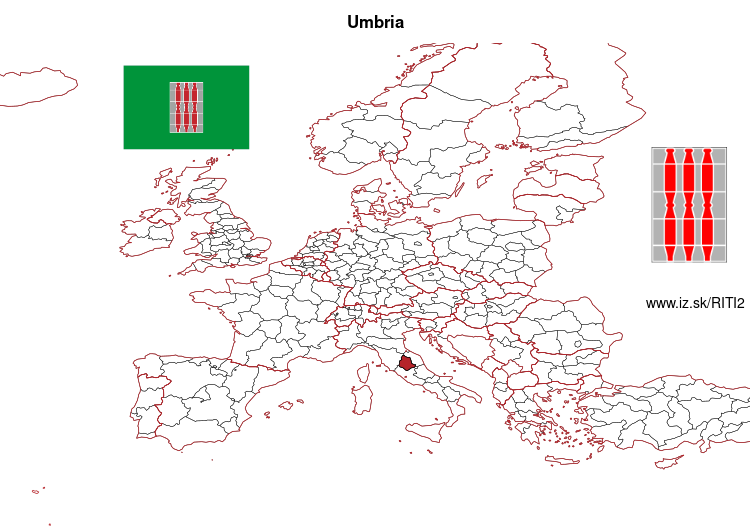
| Indicator | Period | Value |
|---|---|---|
| Life long learning | ||
| life long learning participation | 2024 | 11.7 |
| Part time jobs and flexible employment | ||
| percentage of part time workers | 2024 | 18.96 |
| percentage of part time workers, men | 2024 | 7.99 |
| percentage of part time workers, women | 2024 | 31.97 |
| Gender differences | ||
| gender gap in employment rate | 2024 | 82.44 |
| gender gap in unemployment rate | 2024 | 120.45 |
| Graduates and young people | ||
| unemployment rate of youth with elementary education | 2020 | 41.2 |
| NEET | 2024 | 7.5 |
| Gross domestic product | ||
| GDP per capita in PPS of EU average | 2023 | 83 |
| Employment | ||
| employment rate | 2024 | 68 |
| Social exclusion | ||
| people at risk of poverty or social exclusion | 2020 | 13.9 |
Umbria slovensky: ITI2
Subregions: province of Perugia, province of Terni
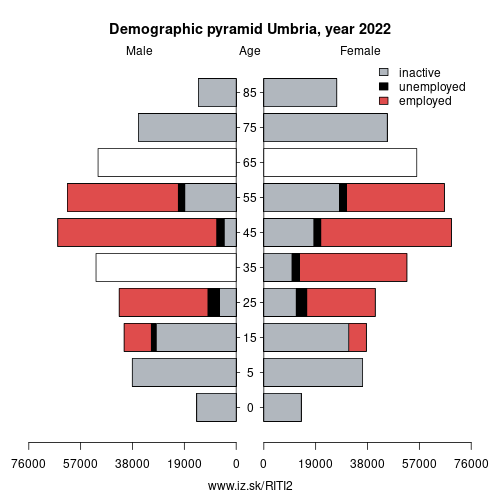
Unemployment
| Indicator | Period | Value |
|---|---|---|
| Unemployment | ||
| unemployment rate | 2024 | 4.9 |
| youth unemployment rate | 2024 | 17.1 |
| Long term unemployment | ||
| long term unemployment | 2024 | 1.6 |
| share of long term unemployed | 2024 | 34.3 |
Demographics
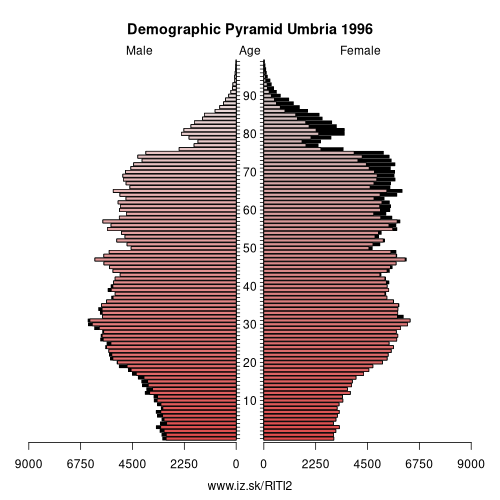
| Indicator | Period | Value |
|---|---|---|
| Demographics | ||
| number of inhabitants | 2024 | 853 068 |
| population density | 2023 | 102.9 |
| old-age dependency ratio | 2024 | 43.9 |
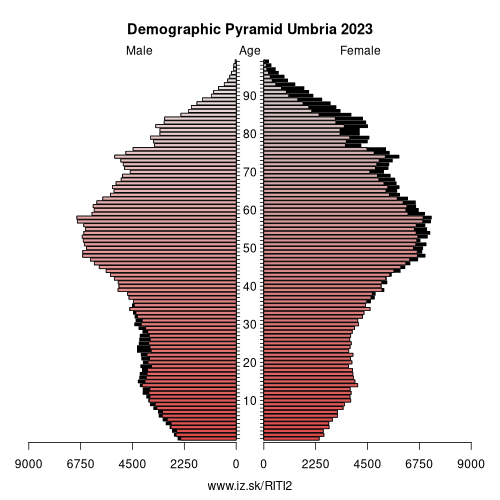
Employment by sectors, Umbria
| NACE r2 | % | NACE r2 | % | ||
|---|---|---|---|---|---|
| A | 9.7 | 3% | B-E | 75.5 | 20% |
| F | 23.5 | 6% | G-I | 98.9 | 27% |
| J | 9.6 | 3% | K | 6.2 | 2% |
| L | 1.8 | 0% | M_N | 40.4 | 11% |
| O-Q | 75.3 | 20% | R-U | 32.1 | 9% |
| TOTAL | 373.1 | 100% |
Data for the period year 2024. Source of the data is Eurostat, table [lfst_r_lfe2en2].
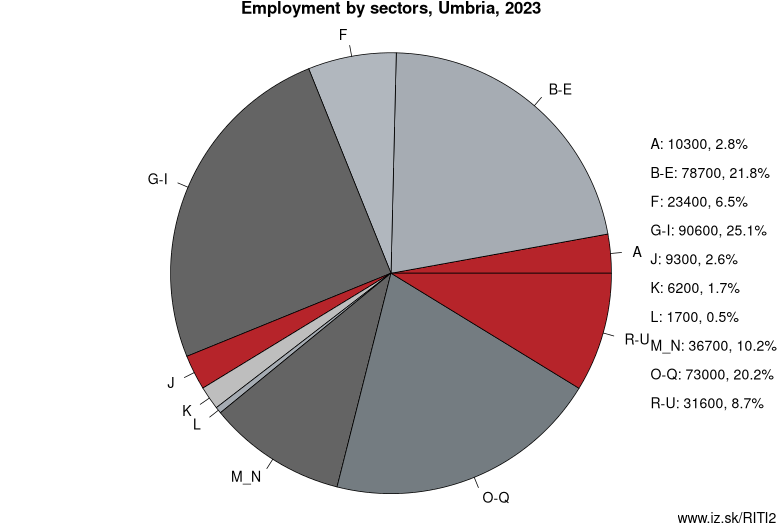
From Wikipedia : Umbria ( UM-bree-ə, Italian: [ˈumbrja]) is a region of central Italy. It includes Lake Trasimeno and Marmore Falls, and is crossed by the River Tiber. The regional capital is Perugia. Umbria is known for its landscapes, traditions, history, culinary delights, artistic legacy, and influence on culture.
The region is characterized by hills, mountains, valleys and historical towns such as the university centre of Perugia, Assisi, a World Heritage Site associated with St. Francis of Assisi, the Basilica of San Francesco and other Franciscan sites, works by Giotto and Cimabue, Terni, the hometown of St. Valentine, Norcia, the hometown of St. Benedict, Città di Castello, main center of the early Renaissance situated in the Tiber High Valley, Gubbio, the hometown of St. Ubaldo, Spoleto, Orvieto, Todi, hometown of the Franciscan mystic Jacopone da Todi, Castiglione del Lago, Narni, Amelia, and other small cities.
Geography
Umbria is bordered by Tuscany to the west and the north, Marche to the east and Lazio to the south.
Other: Central Italy, Lazio, Marche, Umbria, Tuscany
Neighbours: Lazio, Tuscany, Marche
Subregions: province of Perugia, province of Terni
Suggested citation: Michal Páleník: Europe and its regions in numbers - Umbria – ITI2, IZ Bratislava, retrieved from: https://www.iz.sk/PITI2, ISBN: 978-80-970204-9-1, DOI:10.5281/zenodo.10200164

 Share
Share Facebook
Facebook Twitter
Twitter News
News